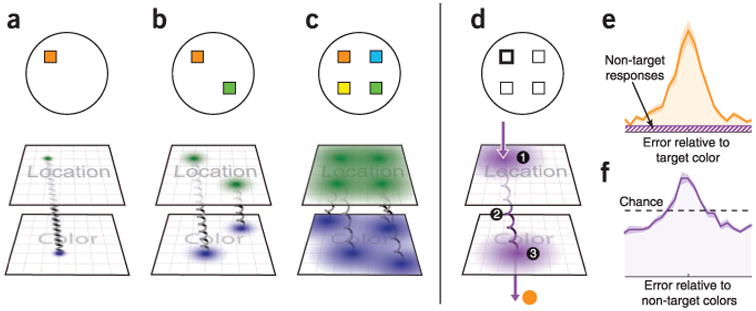Figure 6.

Modes of failure in working memory retrieval. (a) The working memory representation of a colored square can be decomposed into the location of the object in an internal representation of physical space (for example, in posterior parietal cortex; green), the location of the object's color in an internal ‘color space’ (for example, in area V4; blue), and ‘binding’ information that associates the position and color (illustrated here by a spring). (b,c) Increasing working memory load may degrade the quality with which each of the three classes of information is maintained: increasing variability in both color and space representations and making binding information more fragile. (d) To report the color in memory belonging to a given position, the relevant location in internal position space is interrogated, leading via binding information to the corresponding representation in color space. This process can fail in at least three ways. First, variability in position space may cause the wrong position representation to be selected, leading to incorrect report of the color of one of the other objects in memory. Second, binding failure may prevent access to the corresponding color; in this case, a forced response may lead to a random guess from any of the colors in memory. Third, variability in color space may lead to incorrect report of a similar, neighboring color in the internal space. (e) In human data, incorrect reports of non-target objects as a result of the first or second possible sources of failure will produce responses that appear randomly (uniformly) distributed when plotted relative to the target feature value. (f) However, such incorrect reports can be directly observed as a central peak when responses are plotted relative to non-target feature values: if errors were solely a result of variability in the reported feature, this distribution would be flat (data replotted from ref. 9).
